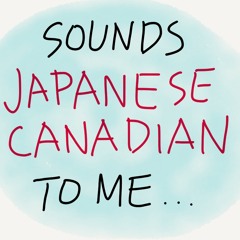
Sounds Japanese Canadian to Me
Review By Carin Holroyd
August 4, 2021
BC Studies no. 211 Autumn 2021 | p. 134-135
Sounds Japanese Canadian to Me is a monthly podcast on Japanese Canadian history and culture. Produced and hosted by Raymond Nakamura and staff of the Nikkei National Museum, the episodes are structured as a casual conversation between two hosts on a specific topic. As much of the content focusses on British Columbia people and events, Sounds Japanese Canadian to Me should be of interest to a BC Studies audience.
Season One ran from 2013-2017. Its twenty-eight episodes covered topics as diverse as Episode Three’s picture brides (which they describe as “the early twentieth-century’s version of extreme online dating”), various aspects of the internment of Japanese Canadians during the Second World War, the Redress Agreement, and strawberry farming in the Fraser Valley. Other episodes looked at aspects of Japanese Canadian culture including episodes on taiko (Japanese drumming), baseball, and Japanese Canadian food. Each of these installments had some surprising insights including the connection between taiko and Japanese Canadian and Japanese American activism, the significance of the Nikkei baseball teams and leagues that existed throughout BC in the pre-Second World War period and the history of furikake (the dry Japanese condiment sprinkled on rice). The diversity of the topics alone makes the series worth exploring.
Several of the episodes highlight important Japanese Canadians like Hide Hyodo Shimizu, the first Japanese Canadian to teach in British Columbia’s public school system and Cumberland, BC’s Aiko Saita who was an international music star from the mid-1930s until her death in 1954. An early episode describes the life and impact of Thomas Shoyama. Shoyama was a reporter for the Japanese Canadian newspaper, The New Canadian, during the Second World War. He became a prominent and highly-respected public servant first in the Saskatchewan government and later in the federal government. The Johnson-Shoyama School of Public Policy at the University of Saskatchewan is named after him. A particularly fun episode entitled “Pidgin…. Bamboo English…. Japlish?” explores historical examples of the mixing of Japanese and English. Nakamura described how his Nisei (second-generation Japanese Canadian) parents used words he always thought were Japanese but turned out to be English words said with Japanese pronunciation. Two amusing examples were haikara (“high collar”) to describe something fancy or high class and donbiro (“down below”) referring to the basement.
As would be expected, the episodes vary in quality. The hosts have a relaxed and friendly manner but, as the episodes appear to be taped live and were not edited extensively, they sometimes veer off on tangents or do not flow that smoothly. Overall, Sounds Japanese Canadian to Me offers interesting insights into both the history and present day lives of Japanese Canadians. The host producers draw on material in the Nikkei National Museum and Cultural Centre archives and the many oral histories collected over the years. This material adds details and individual stories that are not well known. Even those familiar with the topics addressed in the series are likely to learn some new and interesting nuggets of information. Nakamura’s comments, and sometimes those of the co-host, on family experiences enhance the episodes. On the podcast website, there are short descriptions of each podcast along with a glossary of Japanese words if applicable and either a list of sources or further readings for those who wish to explore the topic further.
